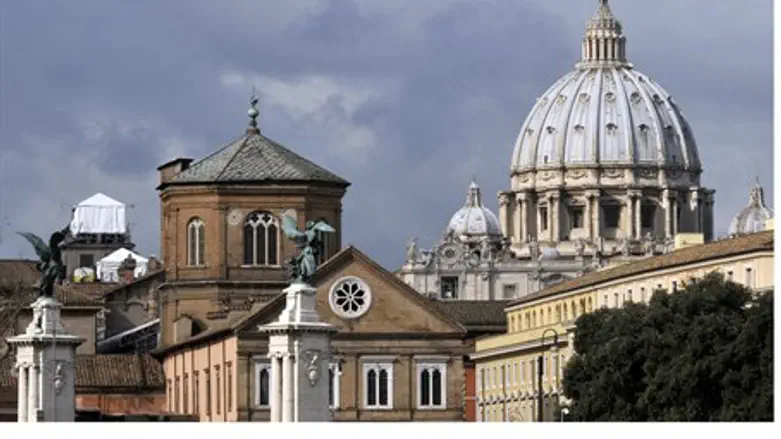
Rome has a new walk on its historical tourism circuit on a dark page of history: a virtual stroll through the streets of the ghetto to which Jews were confined for more than three centuries in an anti-Semitic policy.
From Friday, visitors to the Italian capital's Jewish museum will be able to explore the jumbled, overcrowded neighborhood as it was in the second half of the 19th century via an interactive table, which provides access to a meticulously reconstructed 3D map that works like Google Maps' street view.
The requirement for Jews to live in the Ghetto, established by a Papal Bull of 1555, was abolished with the unification of Italy in 1870. The walls built around it were pulled down in 1888 and most of the buildings inside the enclosure also quickly disappeared, as Rome underwent rapid change in line with its new status as national capital.
Many of the ghetto buildings had been extended upwards in a bid to cope with chronic overcrowding and a ban on horizontal expansion, ensuring some of the streets rarely saw the sun.
While the overall look of the ghetto is not too different according to the maps from how the neighborhood is today, there is a notable difference in that the adjacent River Tiber was far less securely banked, making the area prone to flooding.
Working out which building was where and what they looked like required an eight-strong team of archaeologists, architectural and art historians and software experts, who worked full-time for almost a year to establish a data-base on which the display is based.
As the few photos available to them were all black and white, they relied heavily on the work of artists, most notably Ettore Roesler Franz (1845-1907), to get the colors right.
Roesler Franz is best known for a collection of 120 water colors entitled "Roma sparita" (disappeared Rome) which documented the new capital's modernization.
The museum is part of the same building that houses Rome's main synagogue in a neighborhood that is still home to a small section of Italy's Jewish community, which is one of the longest established in Europe.
Museum directors are discussing whether the 3D vision of the ghetto will be made available online or remain exclusively for visitors.
AFP contributed to this report.